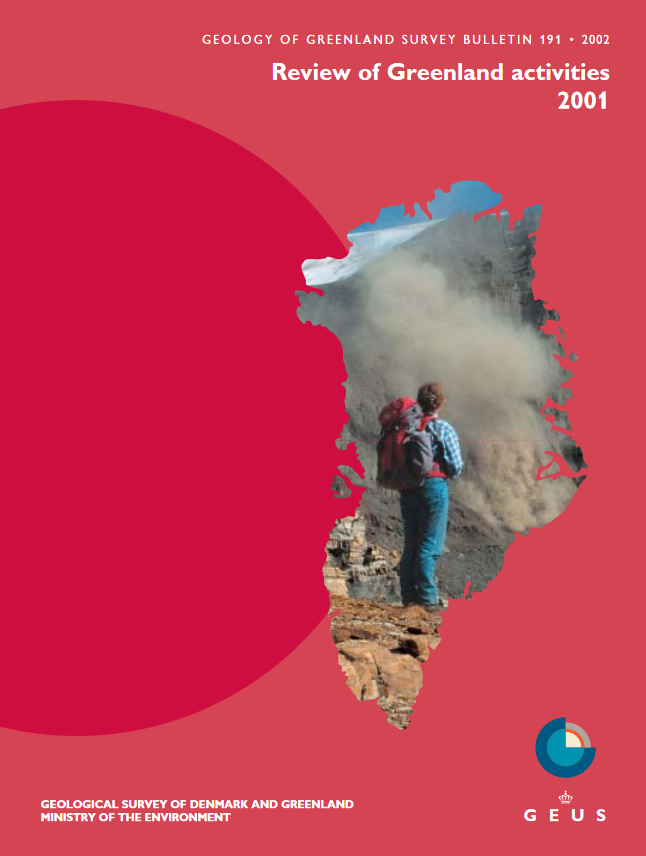Qaanaaq 2001: mineral exploration reconnaissance in North-West Greenland
DOI:
https://doi.org/10.34194/ggub.v191.5141Abstract
Project Qaanaaq 2001, involving one season’s field work, was set up to investigate the mineral occurrences and potential of North-West Greenland between Olrik Fjord and Kap Alexander (77°10´N – 78°10´N; Fig. 1). Organised by the Geological Survey of Denmark and Greenland (GEUS) and the Bureau of Minerals and Petroleum (BMP), Government of Greenland, the project is mainly funded by the latter and has the overall goal of attracting the interest of the mining industry to the region. The investigated region – herein referred to as the Qaanaaq region – comprises 4300 km2 of ice-free land centred on Qaanaaq, the administrative capital of Qaanaap (Thule) municipality. Much of the region is characterised by a 500–800 m high plateau capped by local ice caps and intersected by fjords and glaciers. High dissected terrain occurs in Northumberland Ø and in the hinterland of Prudhoe Land where nunataks are common along the margin of the Inland Ice.
Downloads
Published
Issue
Section
License
This article is distributed under a CC-BY 4.0 licence, permitting free redistribution and reproduction for any purpose, even commercial, provided proper citation of the original work. Author(s) retain copyright over the article contents.


